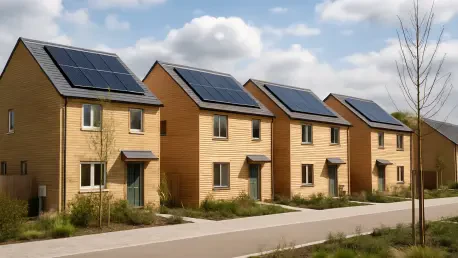I’m thrilled to sit down with Luca Calarailli, a renowned expert in construction, design, and architecture, whose passion for integrating technology into the industry has driven groundbreaking innovations. With his deep expertise, Luca offers unique insights into the recent launch of Habiko, a pioneering affordable housing partnership focused on delivering low-carbon rental communities across the UK. In our conversation, we explore the vision behind this £1 billion program, the strategic choice of initial locations in Chester and Warrington, the emphasis on affordability and sustainability, and the broader impact on urban regeneration and community building.
Can you share the story behind Habiko and how this collaboration between key partners came to life to launch such an ambitious housing program?
Habiko represents a bold step forward in addressing the UK’s housing challenges through a unique partnership focused on affordability and sustainability. The collaboration came together with a shared vision to create high-quality, low-carbon rental homes on a large scale. Each partner brings something vital to the table—one provides development expertise, another offers governmental support to align with national housing goals, and the third ensures long-term financial backing. Together, we’re pooling our strengths to deliver a £1 billion program that aims to build 3,000 homes across the country, prioritizing community needs and environmental responsibility.
What drew Habiko to start with Chester and Warrington for the first phase of this massive project?
Chester and Warrington stood out for several reasons. Both locations have a clear need for affordable housing and are undergoing significant regeneration efforts, which align perfectly with our mission. Chester offers a historic backdrop with a strong push for economic revival, while Warrington’s town center is ripe for transformation into a vibrant, connected community. These areas also provide opportunities to meet local economic and social demands, ensuring our developments don’t just add homes but enhance the overall quality of life and support long-term growth in these regions.
Let’s dive into the Chester project at Charterhall Drive. Can you paint a picture of what’s planned for the 350 homes near the railway station?
The Chester project at Charterhall Drive is an exciting piece of the city’s 15-year regeneration strategy. We’re planning around 350 homes right by the railway station, which means excellent connectivity for residents. The design, crafted by talented architects, focuses on blending modern, energy-efficient living with the city’s historic character. This development isn’t just about housing; it’s about boosting Chester’s economic vitality and strengthening community ties around the historic core. We’re aiming to create a space that feels integrated and supportive of the city’s broader goals for growth and renewal.
Turning to Warrington, what’s the vision for the 240 apartments between Academy Street and Mersey Street?
In Warrington, we’re developing around 240 apartments near the Times Square district, with the goal of breathing new life into the town center. The vision is to create a lively, sustainable community where residents feel connected to the heart of Warrington. This project supports the ongoing regeneration in the area by introducing modern living spaces that encourage interaction and vitality. It’s about more than just building homes; it’s about fostering a sense of place and contributing to the transformation of the urban landscape in a way that benefits everyone.
Affordability is clearly a cornerstone of Habiko’s mission. How are you ensuring these homes reach a diverse range of residents?
Affordability is at the heart of what we do. We’re committed to offering at least 75% of the homes at affordable rent, with the potential to push some schemes to 100%. We’re using a model called Discounted Market Rents, which sets rents at least 20% below local market rates, making these homes accessible to a wider audience. Balancing this with the costs of sustainable construction is a challenge, but we achieve it through strategic funding and a long-term investment approach. Our goal is to ensure that financial barriers don’t prevent people from living in high-quality, energy-efficient homes.
Sustainability is another key pillar for Habiko. Can you walk us through some of the low-carbon features planned for these developments?
Sustainability drives every aspect of our design and construction process. We’re incorporating energy-efficient features like advanced insulation, low-energy heating systems, and renewable energy sources where possible. These elements not only reduce the carbon footprint of the homes but also lower utility costs for residents over time. We’re also exploring innovative building methods and technologies to minimize waste during construction. I’m particularly excited about how these features will set a new standard for rental housing, proving that affordability and environmental responsibility can go hand in hand.
Looking ahead, what’s your forecast for the future of sustainable and affordable housing in the UK?
I’m optimistic about the future of sustainable and affordable housing in the UK. We’re at a turning point where technology, policy, and public demand are aligning to make low-carbon, accessible homes a priority. I believe we’ll see more partnerships like Habiko, leveraging diverse expertise and funding to tackle the housing shortage. The focus on regeneration and community-building will grow, ensuring developments aren’t just about numbers but about lasting impact. If we keep pushing innovation and collaboration, I think we can create a housing landscape that’s equitable and environmentally sound for generations to come.









